Fun and Simple Quilting Projects for Summer
Summer is the perfect time to let your creativity shine through quilting! With the warm sun shining and the gentle breeze blowing, there's no better way to spend your days than diving into fun and simple quilting projects. Whether you're a seasoned quilter or just starting out, the joy of creating something beautiful with your own hands is unmatched. Imagine wrapping yourself in a cozy quilt that you crafted yourself while lounging in the sun or having a picnic with friends. Sounds delightful, right? Let's explore some exciting quilting ideas that will inspire you to pick up your fabric and thread!
Quilting during the summer allows you to embrace vibrant colors and playful patterns that reflect the essence of the season. Think bright florals, cheerful beach motifs, and stunning sunsets! These projects not only provide a creative outlet but also serve as a refreshing escape from the heat. Plus, they can be completed in a weekend, making them perfect for those lazy summer afternoons when you want to enjoy being outdoors while still indulging in your passion for quilting.
One of the best parts about summer quilting is the variety of projects you can tackle. From beginner-friendly quilts that require minimal skills to more intricate designs that challenge your creativity, there's something for everyone. If you’re just starting out, don’t worry! You can create beautiful quilts with simple patterns and lightweight fabrics that are easy to handle. And for those of you who are more experienced, summer is a great time to experiment with new techniques and styles.
As we dive deeper into the world of summer quilting, we'll explore various aspects that can enhance your quilting experience. From selecting the right lightweight fabrics to choosing patterns that embody the summer spirit, each section will provide you with valuable insights. So grab your quilting supplies, find a comfy spot, and let’s embark on this colorful journey together!
- What are some beginner-friendly quilting projects? Simple patterns like lap quilts or patchwork designs are great for beginners.
- What fabrics are best for summer quilting? Lightweight cotton and linen are excellent choices for summer quilts due to their breathability.
- How can I keep cool while quilting in the summer? Consider setting up your quilting space in a well-ventilated area and taking breaks to stay hydrated.
- Can I use fabric scraps for summer quilting? Absolutely! Patchwork quilts are a fantastic way to utilize fabric scraps creatively.

Beginner-Friendly Quilts
Are you new to the world of quilting and feeling a bit overwhelmed? Fear not! There are plenty of simple quilt patterns that are perfect for beginners. These projects are designed to be easy to follow, requiring minimal skills and materials, which makes them ideal for anyone just starting their quilting journey. Imagine the thrill of creating something beautiful with your own hands, even if you’ve never picked up a needle before!
One of the best ways to ease into quilting is by choosing simple geometric designs. Patterns like squares, rectangles, or triangles can be pieced together without much fuss. You don’t need to worry about intricate designs or complicated techniques. Instead, focus on mastering the basics, such as cutting fabric accurately and sewing straight seams. As you gain confidence, you can gradually explore more complex patterns.
Another fantastic option for beginners is to create a lap quilt. These smaller quilts are not only manageable but also serve a practical purpose. They can be used for cozy evenings on the couch or picnics in the park. Plus, the size makes it easier to experiment with different fabrics and colors. Just think of it as a canvas where you can express your creativity without feeling overwhelmed.
When it comes to choosing fabrics, consider using pre-cut fabric bundles. These bundles often come in coordinated colors and patterns, making it simple to select your materials. They save you the hassle of cutting fabric from larger pieces and can help you avoid the dreaded “what goes with what” dilemma. You’ll find plenty of pre-cut options at your local fabric store or online, so you can dive into your project without delay!
If you’re looking for inspiration, there are numerous resources available, including quilting books, online tutorials, and quilting blogs. Many of these resources provide step-by-step instructions and even video demonstrations, which can be incredibly helpful for visual learners. You might even consider joining a local quilting group or online community where you can share your progress and get advice from seasoned quilters.
As you embark on your quilting journey, remember that the most important thing is to enjoy the process. Don’t be too hard on yourself if things don’t turn out perfectly. Every quilter starts somewhere, and with each project, you’ll gain new skills and insights. So gather your materials, pick a simple pattern, and let your creativity flow!
Q: What is the easiest quilt pattern for beginners?
A: A simple square or patchwork quilt is often recommended for beginners because it involves basic sewing techniques and requires less intricate cutting.
Q: How much fabric do I need for a beginner quilt?
A: The amount of fabric needed depends on the size of the quilt. For a lap quilt, you might need around 2 to 3 yards of fabric, but always check the specific pattern for guidance.
Q: Can I use old clothes for quilting?
A: Absolutely! Using old clothes can add a personal touch to your quilt and is a great way to recycle fabric. Just make sure to wash and iron the fabric before using it.
Q: What tools do I need to start quilting?
A: Basic tools include a rotary cutter, cutting mat, quilting ruler, sewing machine, and fabric scissors. You’ll also need pins, thread, and a good iron.
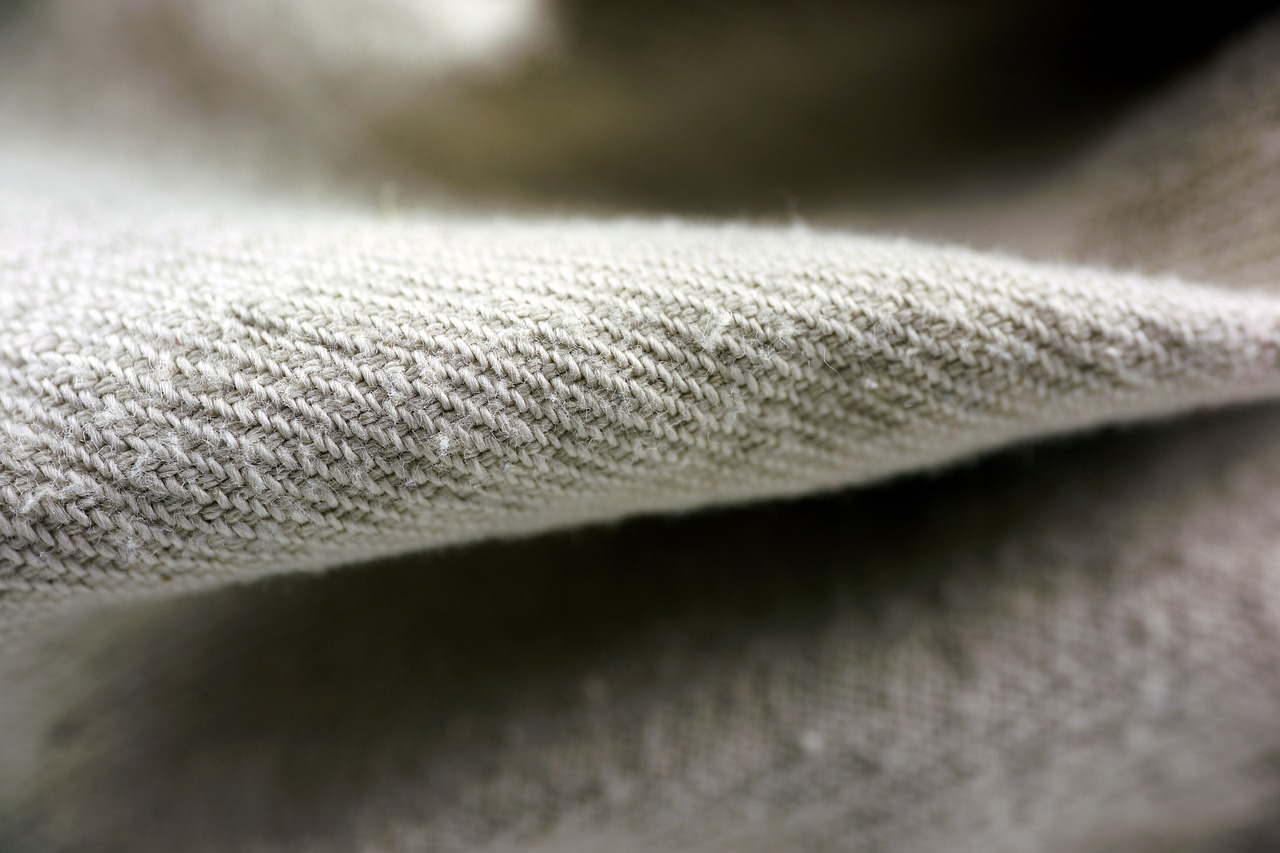
Lightweight Summer Fabrics
When it comes to quilting during the summer months, choosing the right fabric can make all the difference. Lightweight fabrics not only enhance the comfort of your quilts but also add a refreshing aesthetic that resonates with the vibrant spirit of summer. Imagine snuggling under a quilt made from airy, breathable materials while enjoying a sunny day outdoors. Sounds delightful, right? Let's explore some of the best fabric options that are perfect for your summer quilting projects!
One of the most popular choices for summer quilting is cotton. This fabric is not only soft and breathable but also incredibly versatile. It holds colors beautifully, which means your summer quilts can be as bright and cheerful as the season itself. Cotton is easy to work with, making it a favorite among both beginners and experienced quilters. Plus, it’s durable enough to withstand the test of time, ensuring your quilts can be cherished for many summers to come.
On the other hand, we have linen, which offers a unique texture that can elevate your quilting projects. Linen is known for its high breathability, making it an excellent option for hot weather. It has a rustic charm that can add character to your quilts, giving them a laid-back, summer vibe. While linen may require a bit more care in handling compared to cotton, the stunning results are often worth the extra effort. Imagine a quilt with a soft, crinkled look that feels as good as it looks!
When selecting fabrics, consider how you can combine different materials to create a quilt that truly embodies the essence of summer. Mixing cotton and linen can provide a delightful contrast in texture and appearance. For instance, you might use cotton for the quilt top, featuring vibrant prints, while incorporating linen for the backing, adding a touch of sophistication. The interplay of these fabrics can result in a quilt that's not only beautiful but also functional.
Here’s a quick comparison table to help you decide between cotton and linen:
| Feature | Cotton | Linen |
|---|---|---|
| Breathability | Good | Excellent |
| Texture | Soft | Textured |
| Color Retention | High | Moderate |
| Durability | Very Durable | Durable |
| Ease of Use | Easy | Moderate |
In conclusion, both cotton and linen offer unique benefits that can enhance your summer quilting experience. Whether you prefer the softness of cotton or the rustic charm of linen, the key is to choose fabrics that resonate with your personal style and the summer spirit. So, gather your materials, let your creativity flow, and get ready to make some stunning summer quilts that will not only keep you cozy but also brighten up your warm-weather adventures!
Q: What is the best fabric for summer quilts?
A: Cotton is often considered the best choice due to its breathability and softness, but linen is also excellent for its unique texture and coolness.
Q: Can I mix cotton and linen in my quilts?
A: Absolutely! Combining cotton and linen can create beautiful contrasts in texture and color, enhancing the overall appeal of your quilt.
Q: How do I care for linen quilts?
A: Linen quilts should be washed in cold water and air-dried to maintain their texture and durability. Avoid high heat when drying to prevent shrinkage.
Q: Are lightweight fabrics suitable for quilting?
A: Yes, lightweight fabrics like cotton and linen are perfect for summer quilting, providing comfort without adding unnecessary weight.
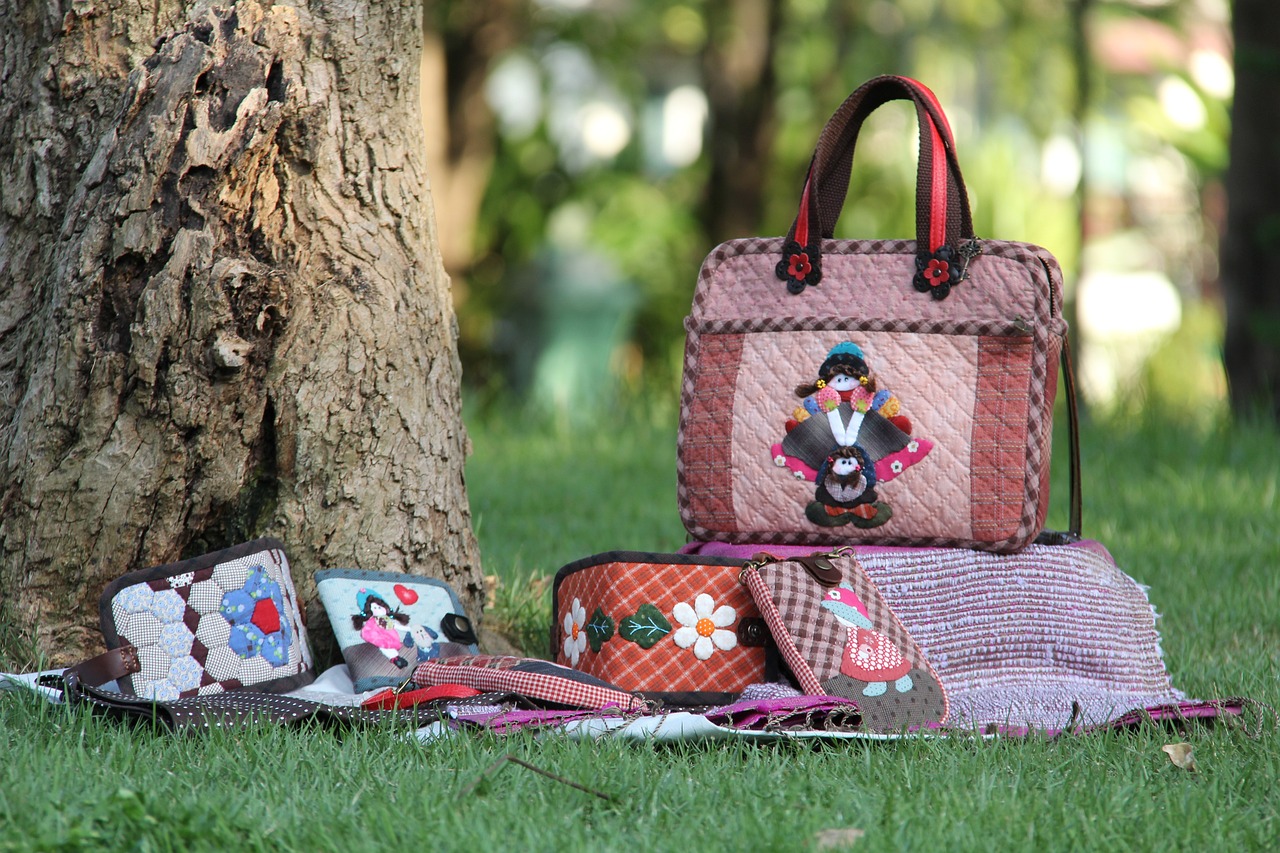
Choosing Cotton vs. Linen
When it comes to selecting the perfect fabric for your summer quilting projects, cotton and linen are two popular choices that each bring their own unique qualities to the table. Understanding the differences between these fabrics can help you make an informed decision that aligns with your project's goals and your personal style. Let’s dive into the characteristics of each fabric and see how they can impact your quilting experience.
Cotton is often the go-to fabric for quilters, especially beginners. Its softness and breathability make it a comfortable choice for summer quilts. Cotton holds colors beautifully, allowing for vibrant designs that can really pop. Additionally, it's durable and easy to work with, making it a favorite among both novice and experienced quilters. You can find cotton in a myriad of prints and patterns, which means you can easily find something that resonates with your summer vibe.
On the other hand, linen offers a different texture that can add a rustic charm to your quilts. Known for its exceptional breathability, linen is perfect for hot summer days, allowing air to circulate and keeping you cool. It has a natural luster and a slightly crisp feel that can give your quilt an elegant touch. However, it’s worth noting that linen can be a bit more challenging to work with, as it tends to fray easily and requires a different approach to sewing compared to cotton.
| Feature | Cotton | Linen |
|---|---|---|
| Breathability | Good | Excellent |
| Durability | Very Durable | Durable but can fray |
| Color Retention | Excellent | Good |
| Ease of Use | Easy | Moderate |
Ultimately, the choice between cotton and linen boils down to your personal preference and the specific look and feel you want for your quilt. If you’re after a quilt that is colorful, easy to handle, and holds up well over time, cotton is your best bet. However, if you’re looking to create something with a more organic, textured appearance that embodies summer's relaxed vibe, linen could be the way to go. Remember, you can even combine both fabrics to enjoy the best of both worlds!
So, which fabric will you choose for your next summer quilting project? The right fabric can elevate your quilting game and bring your creative visions to life, so take your time and select the one that speaks to you!

Benefits of Cotton
Cotton is often hailed as the go-to fabric for quilting, and for good reason! This natural fiber boasts a myriad of benefits that make it a top choice for summer quilting projects. First and foremost, cotton is known for its softness, which provides a gentle touch against the skin, ensuring comfort during those warm summer nights. Imagine wrapping yourself in a quilt made of soft, breathable cotton; it’s like being embraced by a warm hug!
Another significant advantage of cotton is its breathability. Unlike synthetic fabrics, cotton allows air to circulate, helping to regulate body temperature. This is especially important in the summer when the heat can become stifling. Quilting with cotton means you can enjoy your creations without feeling overheated. Plus, cotton is easy to work with—it sews beautifully, holds its shape well, and is forgiving for beginners who are just starting their quilting journey.
When it comes to color, cotton fabric is a dream. It holds dyes exceptionally well, resulting in vibrant, lasting colors that can brighten up any quilt. Whether you prefer bold patterns or subtle pastels, cotton fabrics come in an extensive range of colors and designs, allowing you to express your creativity freely. Additionally, cotton is durable and can withstand frequent washing, making it an excellent choice for quilts that will be used regularly.
Let’s not forget the environmental aspect! Cotton is a renewable resource, making it a more sustainable choice compared to many synthetic alternatives. When you choose cotton for your summer quilting projects, you're not just creating something beautiful; you're also making a responsible choice for the planet.
In summary, here are some of the key benefits of using cotton for your summer quilts:
- Softness: Gentle against the skin for ultimate comfort.
- Breathability: Keeps you cool and comfortable in warm weather.
- Ease of Use: Ideal for both beginners and experienced quilters.
- Vibrant Colors: Holds dyes well for long-lasting beauty.
- Durability: Can withstand regular use and washing.
- Eco-Friendly: A renewable resource that supports sustainability.
So, whether you're crafting a cozy lap quilt for a summer picnic or creating a decorative piece for your home, cotton fabric offers the perfect blend of comfort, style, and sustainability that can elevate your quilting experience. Dive into your quilting projects with confidence, knowing that cotton is your trusty companion!
Q: Can I use cotton for all types of quilts?
A: Absolutely! Cotton is versatile and suitable for various quilting styles, from traditional to modern designs.
Q: How do I care for cotton quilts?
A: Cotton quilts can be machine washed in cold water and tumble dried on low. Always check the care instructions on your fabric for specific guidelines.
Q: Is cotton fabric available in different weights?
A: Yes, cotton fabric comes in various weights, from lightweight cotton for summer quilts to heavier options for winter projects.
Q: Are there any downsides to using cotton?
A: While cotton is generally durable, it can wrinkle easily and may shrink if not pre-washed. However, these issues are manageable with proper care.

Advantages of Linen
Linen, a fabric derived from the flax plant, brings a multitude of advantages to the quilting table, especially during the warm summer months. One of the most notable benefits of linen is its exceptional breathability. This property allows air to circulate freely, making linen quilts a comfortable choice for those hot, sticky days when you want to snuggle up without overheating. Imagine wrapping yourself in a quilt that feels as light as a summer breeze—this is the essence of linen!
Another advantage of linen is its unique texture. Unlike cotton, linen has a slightly coarse feel that can add a rustic charm to your quilting projects. This texture can create a beautiful contrast when combined with softer fabrics, making your quilts not only functional but also visually stunning. The natural slubs and variations in linen give each quilt a distinctive look, ensuring that no two pieces are ever exactly alike.
Furthermore, linen is known for its durability. It can withstand the test of time, making it a wise investment for your quilting projects. While it may require a bit more care than cotton, the longevity of linen quilts is worth the effort. With proper maintenance, these quilts can be cherished for generations, becoming family heirlooms that tell a story of summer memories and cozy evenings.
When it comes to color retention, linen holds dyes exceptionally well. This means your summer-themed quilts can feature vibrant colors that remain bright and fresh over time. Whether you're opting for sunny yellows, ocean blues, or floral pinks, linen will ensure that your quilt remains a visual delight season after season.
In conclusion, choosing linen for your summer quilting projects can elevate your creations in ways that cotton simply cannot. Its breathability, unique texture, durability, and excellent color retention make it a standout fabric choice. So, if you're looking to add a touch of elegance and comfort to your quilts this summer, consider incorporating linen into your fabric lineup. You won't be disappointed!
- What is the best way to care for linen quilts? Linen quilts should be washed gently in cold water and air-dried to maintain their texture and color.
- Can linen be mixed with other fabrics? Yes! Linen pairs beautifully with cotton and other lightweight fabrics, creating a stunning contrast.
- Is linen suitable for all seasons? While linen is perfect for summer due to its breathability, it can also be layered with other fabrics for warmth in cooler months.
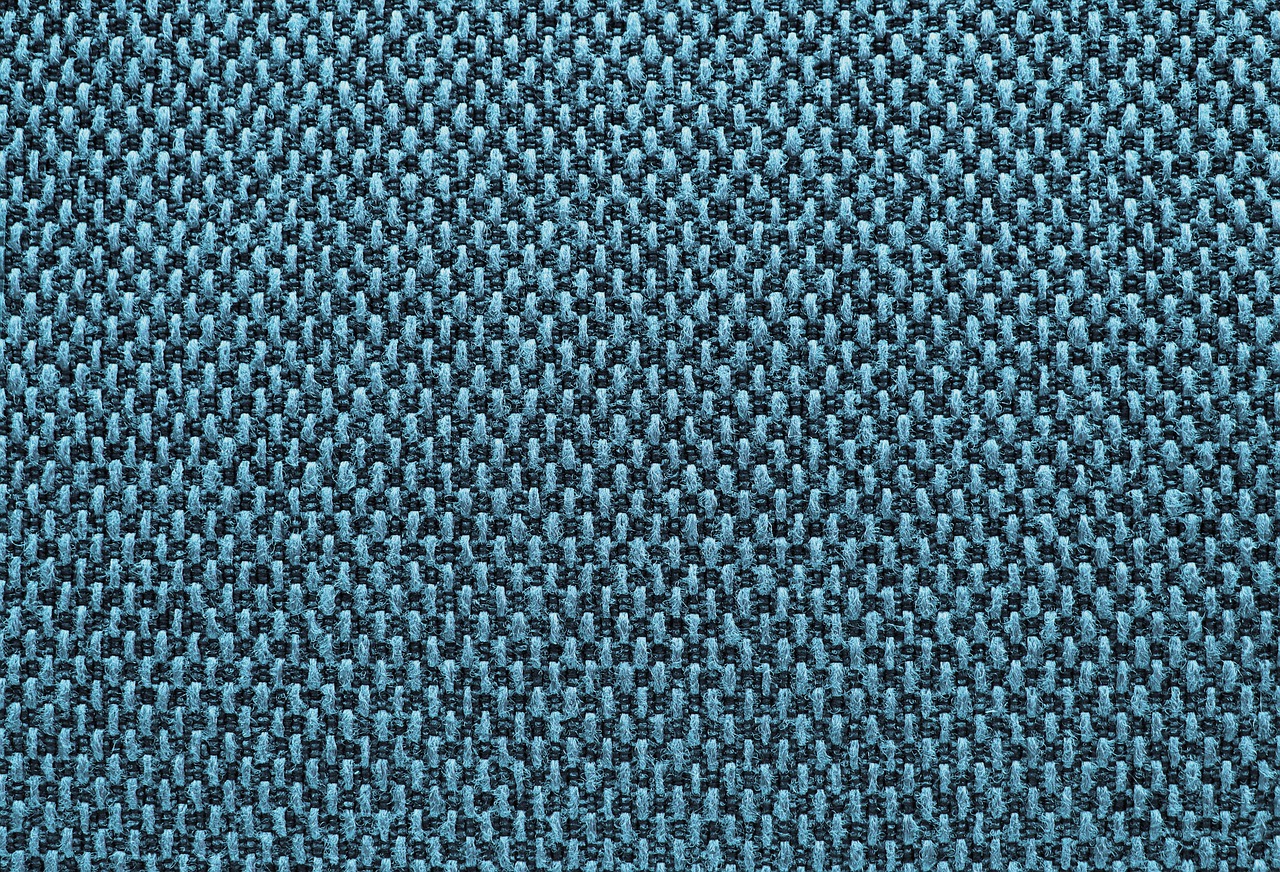
Combining Fabrics for Summer Vibes
When it comes to creating vibrant summer quilts, combining fabrics can be the secret ingredient that transforms a simple project into a stunning masterpiece. Imagine the joy of mixing and matching different textures, colors, and patterns to evoke the very essence of summer. Just like a refreshing fruit salad, the right combination can create a delightful experience for the eyes and the heart!
One of the best parts about summer quilting is the ability to play with a variety of fabrics. You can experiment with bright colors that mirror the sunny skies, or soft pastels that evoke a sense of calm and relaxation. Consider the following tips when selecting your fabrics:
- Color Palette: Start with a color palette that reflects summer—think vibrant yellows, ocean blues, and lush greens. You can also incorporate floral prints that add a cheerful touch.
- Texture Variety: Mixing different textures can add depth to your quilt. Pair smooth cotton with a rustic linen or a textured voile for a unique feel.
- Pattern Play: Don’t shy away from combining patterns! Stripes can work beautifully with florals, and polka dots can add a playful element to your design.
As you dive into your fabric stash, consider creating a mood board to visualize your combinations. This can help you see how different fabrics interact with each other. Lay out your chosen fabrics next to one another and observe how they complement or contrast. This step is essential because it allows you to feel the fabrics together and assess their compatibility before cutting.
Furthermore, think about the theme of your quilt. Are you aiming for a beachy vibe? Incorporate fabrics with seashells, waves, or sandy hues. If you want to capture the feel of a blooming garden, opt for floral prints paired with leafy greens. The theme you choose will guide your fabric selection and ensure a cohesive look.
Lastly, remember that quilting is a personal journey, and there are no hard and fast rules. Embrace your creativity and let your intuition guide you. The more you experiment with different combinations, the more you’ll discover your unique quilting style. So gather your fabrics, channel your inner artist, and get ready to create a quilt that radiates summer vibes!
Q1: What types of fabrics are best for summer quilting?
A1: Lightweight cotton and linen are excellent choices for summer quilting due to their breathability and comfort.
Q2: Can I mix different fabric types in one quilt?
A2: Absolutely! Mixing different fabric types can add texture and visual interest to your quilt. Just ensure they are compatible in terms of care and durability.
Q3: How do I choose a color palette for my quilt?
A3: Consider the mood you want to create. For summer, vibrant colors like yellows and blues are great, while pastels can offer a softer feel. Creating a mood board can help visualize your color choices.
Q4: What should I do with fabric scraps?
A4: Fabric scraps can be used for patchwork quilts, small projects, or even embellishments. They are a great way to reduce waste and create unique designs!
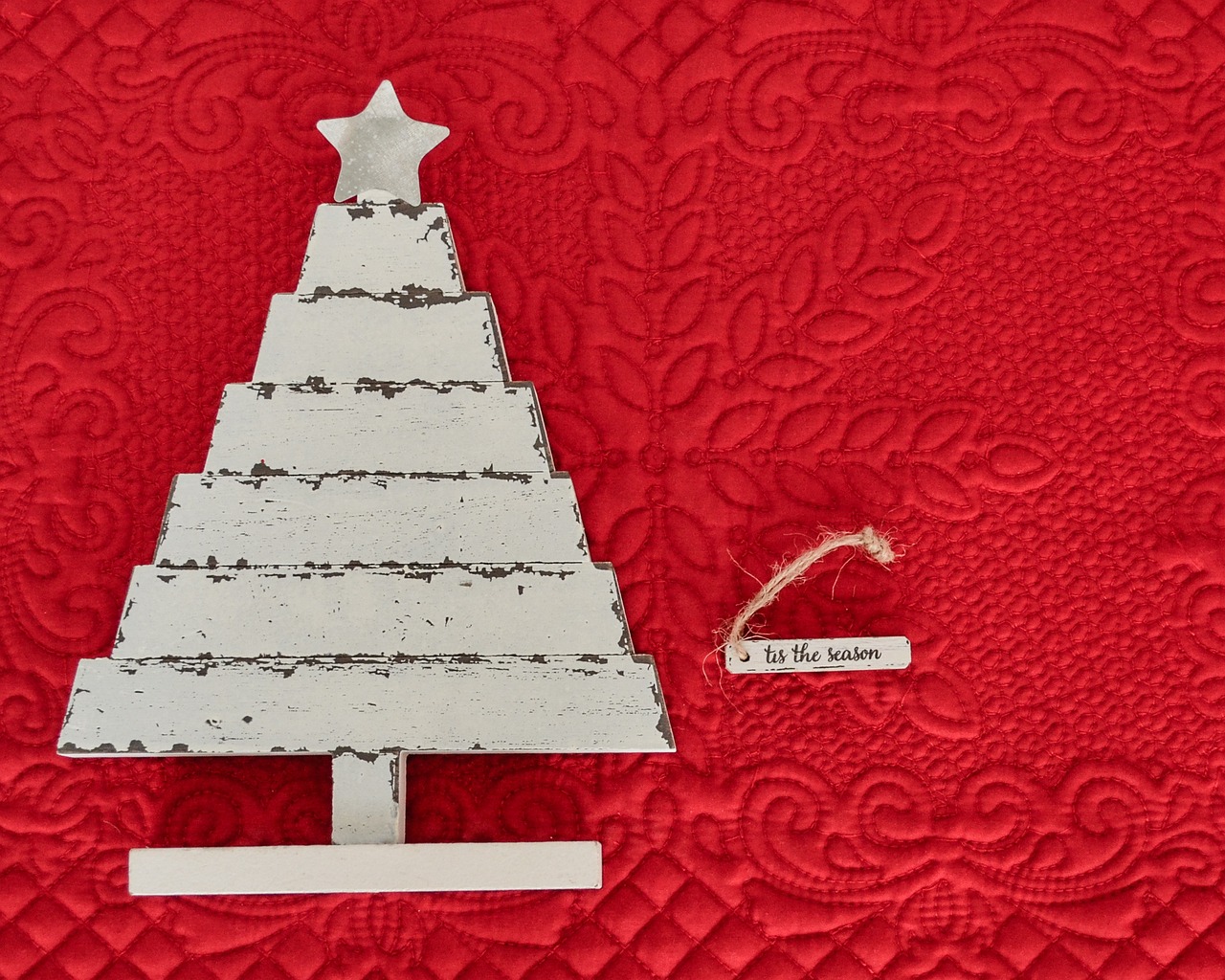
Quick Quilt Patterns
When summer rolls around, the last thing you want is to be stuck indoors for hours on end, working on a complex quilt. Instead, why not dive into some that can be completed in just a weekend? These projects are perfect for those sunny days when you want to enjoy the great outdoors while still indulging your creative side. Imagine spreading out a beautiful quilt on the grass for a picnic or draping it over your favorite lounge chair while sipping iced tea. Sounds delightful, right?
One of the best parts about quick quilt patterns is that they allow you to express your creativity without the pressure of time constraints. Whether you're a seasoned quilter or just starting, these projects are designed to be simple yet satisfying. You can choose from a variety of patterns that require minimal cutting and sewing, making them perfect for those lazy summer afternoons. Plus, they often utilize larger fabric pieces, which means less time spent piecing things together!
For instance, consider making a lap quilt. These cozy quilts are not only quick to whip up, but they're also incredibly versatile. Perfect for outdoor relaxation, lap quilts can easily be carried along for picnics, beach trips, or even just a lazy day in the backyard. You can choose cheerful summer fabrics, like bright florals or ocean-inspired prints, to create a quilt that truly embodies the essence of the season. Imagine laying on a blanket, wrapped in your own handmade quilt, soaking up the sun—pure bliss!
Another fantastic option for quick summer quilting is utilizing your fabric scraps to create patchwork quilts. This approach not only minimizes waste but also results in a unique, colorful design that celebrates your creativity. You can take bits and pieces of leftover fabrics and mix them together to form a one-of-a-kind quilt that tells a story. The beauty of patchwork is that there are no strict rules; you can mix and match patterns, colors, and textures to your heart's content. It’s like creating a visual diary of your quilting journey!
In case you're wondering what patterns might work best for these quick projects, here are a few ideas:
- Simple Squares: Just cut squares of fabric and sew them together in a grid formation. This classic design is fast and always looks great!
- Strip Quilts: Use long strips of fabric sewn together to create a striped effect. This method is not only quick but also allows for a beautiful play of colors.
- Charm Pack Quilts: If you have charm packs (pre-cut fabric squares), you can whip up a quilt in no time by simply sewing them together.
By focusing on these quick quilt patterns, you can have a finished project ready to enjoy in no time. So grab your fabric, a rotary cutter, and your sewing machine, and let the summer quilting adventures begin!
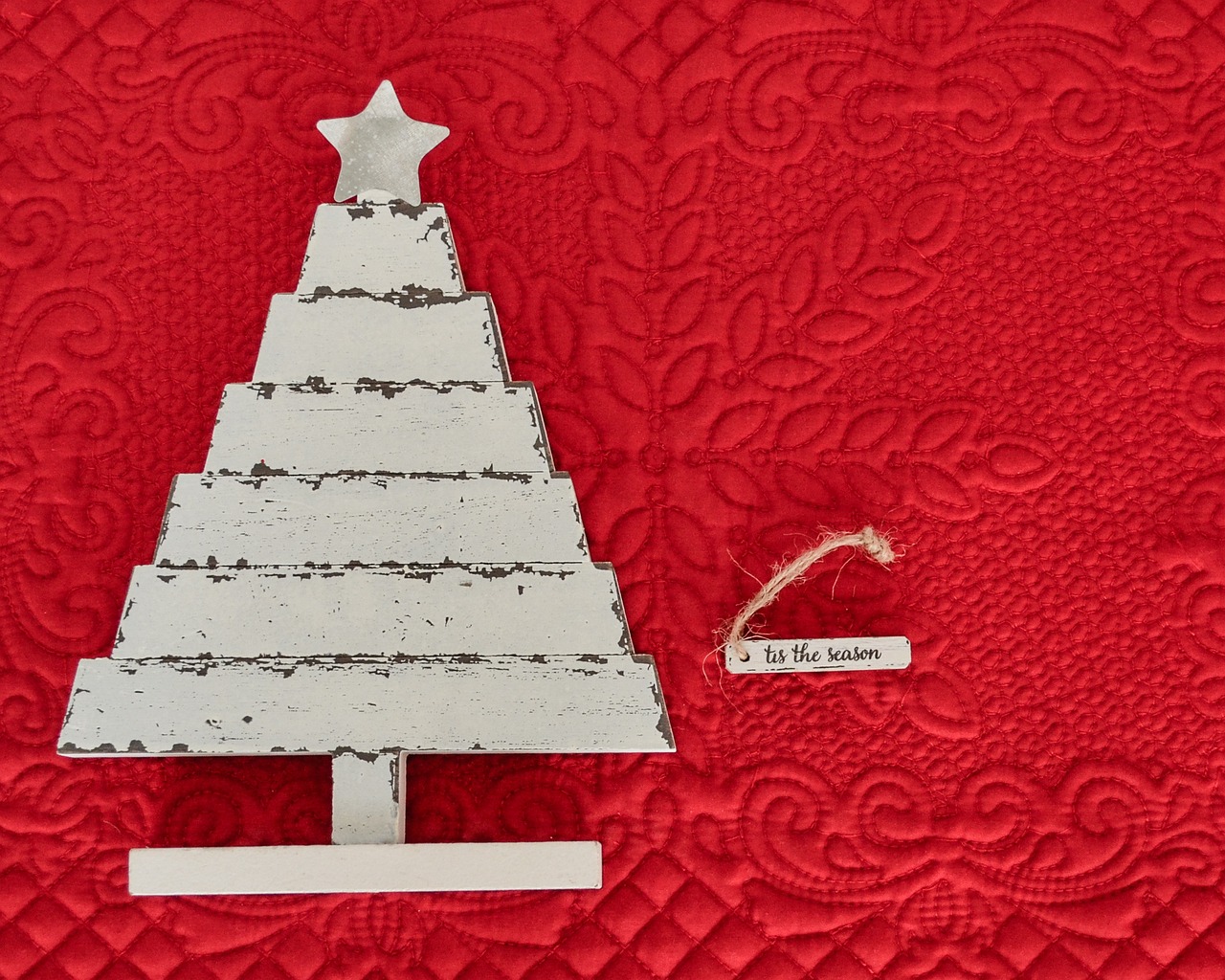
Lap Quilts for Outdoor Relaxation
There's something utterly delightful about curling up with a cozy lap quilt while basking in the warm summer sun. Lap quilts are not just functional; they bring a sense of comfort and style to any outdoor gathering. Imagine spreading out a beautifully crafted quilt on the grass for a picnic or draping it over your legs while you lounge on the patio. These quilts are the perfect companions for those lazy summer afternoons, providing warmth without the bulk of larger quilts.
When creating a lap quilt, consider the size and weight. Typically, lap quilts measure around 50 inches by 60 inches, making them easy to transport and perfect for a variety of settings. You can even customize your quilt to fit your personal style or the theme of your outdoor event. Whether you're hosting a backyard barbecue or enjoying a quiet evening under the stars, a lap quilt adds a touch of warmth and personality to your space.
One of the best aspects of lap quilts is their versatility. They can be made from a variety of fabrics, allowing you to mix and match patterns and colors. Think about using lightweight cotton or linen for breathability, ensuring that your quilt remains comfortable even during the warmest days. You can also incorporate fun summer motifs, like vibrant florals or playful beach designs, to really capture the essence of the season.
As you embark on your lap quilt project, here are a few tips to keep in mind:
- Choose breathable fabrics: Opt for materials like cotton or linen that allow for airflow and comfort.
- Consider portability: Make sure your quilt is lightweight and easy to carry for those outdoor adventures.
- Get creative with patterns: Use a mix of colors and designs to reflect your personality and the vibrant summer atmosphere.
In conclusion, lap quilts are not just a practical addition to your summer outings; they also enhance the overall experience. They provide a cozy space to relax, enjoy nature, and create memories with friends and family. So, grab your fabric, let your creativity flow, and start crafting a lap quilt that will be the star of your summer relaxation!
Q: What is the typical size of a lap quilt?
A: A lap quilt usually measures around 50 inches by 60 inches, making it perfect for covering your legs while sitting.
Q: What fabrics are best for summer lap quilts?
A: Lightweight fabrics like cotton and linen are ideal for summer lap quilts as they are breathable and comfortable.
Q: Can I use scrap fabric for my lap quilt?
A: Absolutely! Using scrap fabric can create a unique patchwork design, adding character and charm to your lap quilt.
Q: How do I care for my lap quilt?
A: Most lap quilts can be machine washed on a gentle cycle. It's best to check the care instructions for the specific fabrics used.

Patchwork Ideas for Scrap Fabric
Have you ever found yourself staring at a pile of fabric scraps, wondering what to do with them? Well, you're not alone! Many quilters face the delightful dilemma of leftover fabric pieces after completing a project. Instead of letting those scraps gather dust, why not turn them into something beautiful? Patchwork quilting is the perfect way to breathe new life into those bits and pieces, transforming them into stunning quilts that tell a story of creativity and resourcefulness.
One of the most exciting aspects of patchwork is the freedom it offers. You can mix and match different colors, patterns, and textures to create a quilt that reflects your personal style. Imagine a quilt that showcases vibrant floral prints alongside calming solid colors—each piece contributing to a cohesive yet eclectic design. This technique not only reduces waste but also allows for endless creativity. With just a little imagination, your scrap fabric can become a work of art!
Here are some fun ideas to get you started on your patchwork journey:
- Scrap Quilt Blocks: Create simple quilt blocks using your scraps. Cut your fabric into squares or triangles and sew them together to form unique designs. You can even follow a specific pattern or go completely freestyle!
- String Quilts: This technique involves sewing long strips of scrap fabric onto a foundation fabric. The result is a visually striking quilt that showcases your fabric choices in a fun and dynamic way.
- Patchwork Pillows: If you're looking for a quicker project, consider making patchwork pillows. They can add a pop of color to your living space and are a great way to use smaller scraps.
- Quilted Bags: Transform your scraps into stylish tote bags or pouches. Not only are these practical, but they also make for great gifts!
As you embark on your patchwork adventure, remember that there are no strict rules. The beauty of quilting lies in the process and the joy of creating something uniquely yours. Don’t be afraid to experiment with different techniques and styles. You might discover a new favorite method that you never considered before! And if you find yourself with even more scraps after your patchwork project, don't worry—there's always another quilt waiting to be made.
Incorporating patchwork into your quilting repertoire is not just about creating beautiful items; it's also a wonderful way to embrace sustainability. By using what you have, you contribute to a more eco-friendly approach to crafting. Plus, every quilt made from scraps carries a story—a story of creativity, resourcefulness, and the joy of quilting. So, grab those scraps and start stitching!
1. What is patchwork quilting?
Patchwork quilting is a technique that involves sewing together pieces of fabric to create a larger design. It allows for creativity and personalization, making each quilt unique.
2. How do I choose fabrics for my patchwork project?
When selecting fabrics, consider using a mix of colors and patterns that complement each other. You can use a color wheel for guidance or simply choose fabrics that appeal to your personal taste.
3. Can I use any fabric scraps for patchwork?
Yes! You can use a variety of fabric types, but it's best to stick to cotton or cotton blends for quilting due to their durability and ease of handling.
4. What are some tips for beginners in patchwork quilting?
Start small! Choose a simple pattern, and don’t be afraid to make mistakes. Practice will help you improve your skills, and remember to have fun with the process!
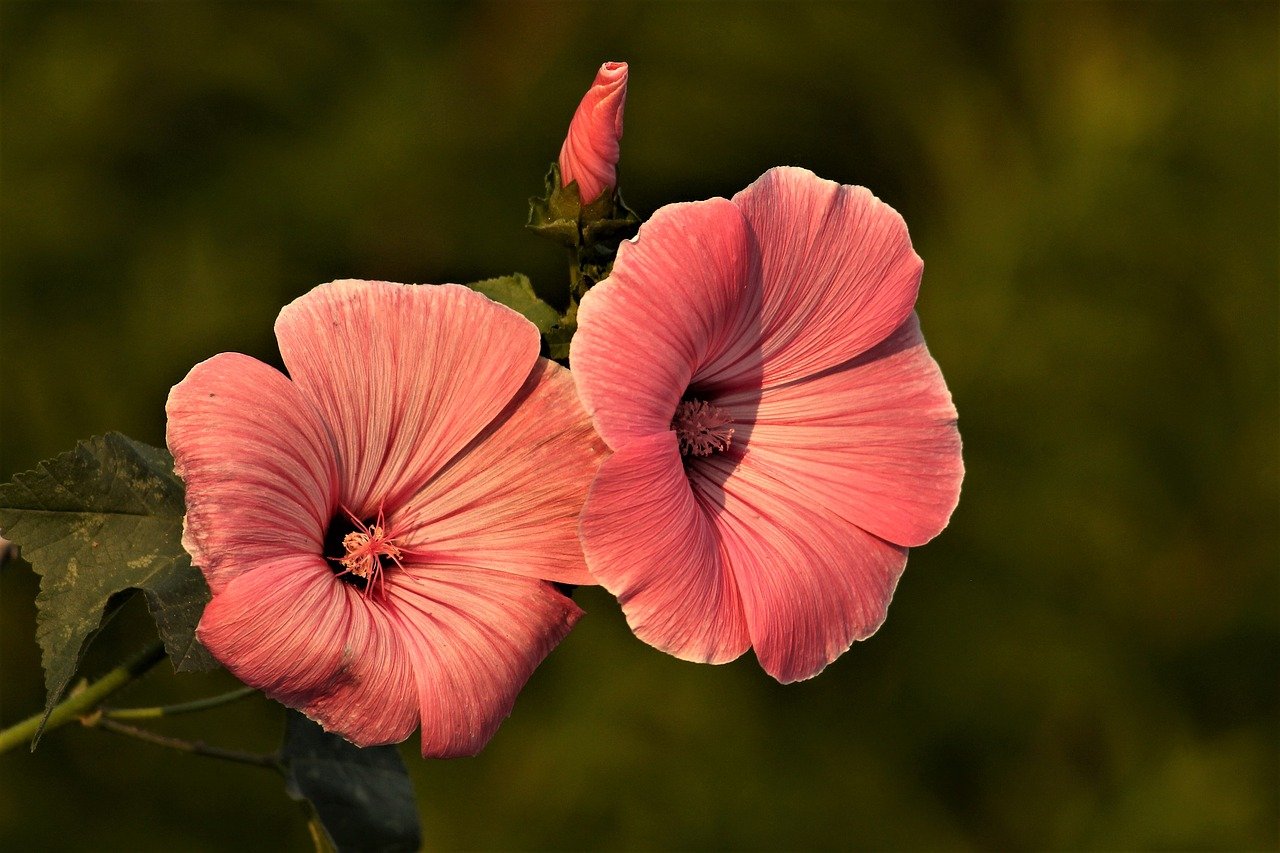
Summer-Themed Quilt Designs
When the sun shines bright and the days grow longer, it's the perfect time to bring a little summer magic into your quilting projects. allow you to capture the essence of the season, infusing your creations with vibrant colors and playful motifs. From floral patterns to beach-inspired designs, there are countless ways to express the joy of summer through quilting. Imagine wrapping yourself in a quilt that reminds you of sun-kissed days and warm evenings spent outdoors. Sounds delightful, right?
One of the most popular choices for summer quilts is floral patterns. These designs can range from delicate daisies to bold sunflowers, creating a fresh and lively aesthetic. Floral quilts not only brighten up your space but can also evoke memories of blooming gardens and picnics in the park. You might opt for a scrappy floral quilt, where you use various fabric scraps to create a patchwork of colors and shapes, or a more cohesive design featuring a single type of flower. The possibilities are endless!
Another fantastic way to celebrate summer through quilting is by incorporating beach and ocean inspirations. Think about the soothing colors of the sea, the sandy shores, and the playful patterns of seashells and starfish. A quilt featuring these elements can transport you to your favorite beach, even if you're stuck indoors. You could create a quilt that mimics the waves with flowing patterns or one that showcases marine life through appliqué techniques. These designs not only capture the beauty of summer but also bring a sense of tranquility and relaxation to your home.
To give you a better idea of how to bring these summer vibes to life in your quilts, here’s a quick table comparing some popular summer-themed designs:
| Design Type | Description | Color Palette |
|---|---|---|
| Floral Patterns | Vibrant flowers in various styles and sizes. | Bright pinks, yellows, and greens. |
| Beach Motifs | Patterns featuring seashells, waves, and starfish. | Soft blues, sandy beiges, and coral tones. |
| Sunshine Themes | Designs that incorporate suns, rays, and bright colors. | Yellows, oranges, and whites. |
As you embark on your summer quilting journey, don’t hesitate to mix and match these themes. Combining floral designs with beach motifs can create a truly unique quilt that reflects the joyful spirit of summer. Remember, quilting is all about creativity and personal expression, so let your imagination run wild!
What fabrics are best for summer-themed quilts?
Lightweight cotton or linen fabrics work wonderfully for summer quilts. They are breathable and comfortable, making them perfect for warm weather.
Can I use my fabric scraps for summer-themed quilts?
Absolutely! Using fabric scraps is a fantastic way to create unique patchwork designs that celebrate the season while minimizing waste.
How do I choose a color palette for my summer quilt?
Consider colors that evoke summer feelings, such as bright pastels or vibrant hues. Think about what inspires you during the summer months—be it flowers, beaches, or sunsets.
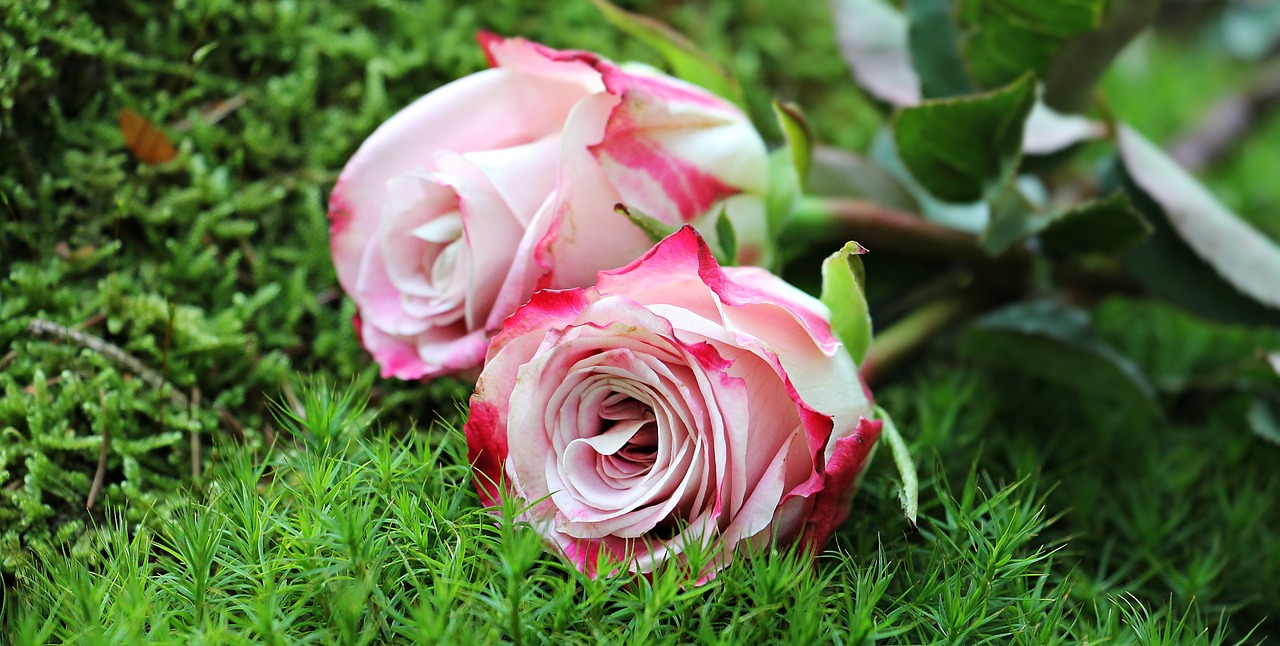
Floral Patterns for a Fresh Look
When it comes to summer quilting, floral patterns are like a breath of fresh air. They embody the vibrancy and liveliness of the season, making them an ideal choice for your quilting projects. Imagine wrapping yourself in a quilt adorned with blooming flowers, their colors echoing the beauty of a sunny garden. Not only do these patterns bring a cheerful aesthetic, but they also allow for endless creativity. You can mix and match different floral designs to create a quilt that tells a story of summer adventures.
One of the exciting aspects of using floral patterns is the variety they offer. From bold, oversized blooms to delicate, intricate designs, there’s something for everyone. You might want to consider the following styles when selecting floral fabrics:
- Vintage Floral: These patterns often feature soft colors and classic designs, perfect for a nostalgic touch.
- Modern Floral: Bright, abstract florals that can add a contemporary flair to your quilts.
- Botanical Prints: These designs incorporate leaves and stems, providing a more natural look.
Additionally, the choice of colors plays a significant role in how your quilt will feel. Light pastels can evoke a sense of calm and serenity, while vibrant hues can energize your space. Pairing different floral patterns with complementary solids can enhance the overall design, creating a balanced and visually appealing quilt. Just think of it as arranging a bouquet—each piece contributes to the beauty of the whole.
To help you visualize your options, here’s a simple table outlining some popular floral patterns and their characteristics:
| Floral Pattern Type | Characteristics | Best Used In |
|---|---|---|
| Vintage Floral | Soft colors, classic designs | Quilts for traditional decor |
| Modern Floral | Bright, abstract designs | Contemporary quilts and throws |
| Botanical Prints | Incorporates leaves and stems | Nature-themed quilts |
As you embark on your floral quilting journey, don’t forget to let your personality shine through your fabric choices. Perhaps you have a favorite flower that inspires you, or maybe you want to create a quilt that reflects the vibrant colors of summer sunsets. The possibilities are truly endless! So grab your fabric, let your creativity flow, and create a stunning quilt that captures the essence of summer.
Q: What types of floral fabrics are best for summer quilts?
A: Lightweight cottons or linens with vibrant floral patterns are ideal for summer quilts, as they are breathable and comfortable.
Q: Can I mix different floral patterns in one quilt?
A: Absolutely! Mixing different floral patterns can create a unique and dynamic look. Just be sure to balance the colors and styles for a cohesive design.
Q: How do I care for floral quilts?
A: To maintain the beauty of your floral quilts, wash them in cold water with a gentle detergent, and avoid direct sunlight when drying to prevent fading.

Beach and Ocean Inspirations
When summer rolls around, there's nothing quite like the soothing vibes of the beach and ocean to inspire your quilting projects. Imagine the gentle sound of waves crashing, the soft feel of sand beneath your toes, and the vibrant colors of a sunny day by the shore. These elements can be beautifully translated into your quilts, bringing a slice of summer into your home.
To capture that essence, consider using a palette that reflects the beach's natural beauty. Think of the soft blues of the ocean, the warm yellows of the sun, and the earthy tones of sandy shores. Using these colors in your quilts can evoke feelings of relaxation and joy, reminiscent of lazy summer days spent by the sea. You can incorporate various patterns that mimic ocean waves, seashells, or even playful beach umbrellas. These motifs not only enhance the visual appeal of your quilts but also create a narrative that transports you to your favorite beach spot.
One of the most exciting aspects of creating beach-themed quilts is the opportunity to experiment with different fabric textures. For instance, you might choose smooth cottons to represent the calm surface of the water or textured linens that evoke the feel of beach towels. Mixing these fabrics can add depth and interest to your projects, making them not just quilts but also works of art. Plus, the tactile experience of these materials can remind you of summer adventures, adding a personal touch to your creations.
To help you get started, here are some popular beach and ocean motifs that you can incorporate into your quilts:
- Seashells: Capture the beauty of the beach with delicate seashell designs that can be appliquéd onto your quilt.
- Waves: Create a dynamic effect by using fabric strips in varying shades of blue to mimic the movement of ocean waves.
- Beach Umbrellas: Brightly colored umbrella patterns can add a cheerful touch and evoke memories of sunny days.
- Starfish: These whimsical shapes can be used as focal points or scattered throughout your quilt for added charm.
As you embark on your beach-themed quilting journey, remember that the key is to have fun and let your creativity flow. Each stitch can tell a story, and every fabric choice can evoke a memory of summer. So, grab your sewing machine, put on some beachy tunes, and let the ocean inspire you to create something truly special!
Q: What fabric types are best for beach-themed quilts?
A: Cotton and linen are excellent choices. Cotton is soft and easy to work with, while linen adds a unique texture that can enhance the beach aesthetic.
Q: How can I incorporate ocean motifs into my quilt?
A: You can use appliqué techniques to add shapes like seashells and starfish, or create patchwork designs that mimic waves and beach umbrellas.
Q: Are there specific colors that work well for summer quilts?
A: Yes! Colors like soft blues, sandy beiges, and sunny yellows are perfect for capturing the essence of summer and the beach.
Q: How do I keep my quilting space comfortable during hot summer days?
A: Consider working in a well-ventilated area or using a fan. Take breaks to stay hydrated, and try to quilt during cooler parts of the day, such as early morning or late evening.

Tips for Quilting in Warm Weather
Quilting during the summer can be a delightful experience, but it also comes with its own set of challenges. The heat can make it uncomfortable to sit for long periods, and the materials can behave differently in warmer temperatures. Therefore, it's essential to adopt some strategies that will keep you cool and productive while you work on your projects. One of the first things to consider is the environment where you quilt. Try to set up your quilting space in a well-ventilated area or near a fan. This simple adjustment can make a world of difference, allowing you to focus on your creativity rather than the discomfort of heat.
Another effective tip is to schedule your quilting sessions during the cooler parts of the day. Early mornings or late evenings can be much more pleasant for quilting, and you might find that your creativity flows better when you're not battling the heat. If you find that the heat is too intense, consider taking breaks more frequently. Step outside for a bit of fresh air or grab a cold drink to refresh yourself. This will not only keep you cool but also help maintain your focus and energy levels.
When it comes to materials, choosing lightweight fabrics is crucial. Opt for cottons or linens that breathe well and allow air to circulate. Avoid heavy flannels or thick batiks, as they can trap heat and make your quilting experience less enjoyable. Additionally, consider using a smaller quilting project during the summer months. A lap quilt or a small wall hanging can be just as fulfilling as a larger quilt, and you can complete it in a shorter amount of time. This approach allows you to enjoy the satisfaction of finishing a project without the heat-induced fatigue that comes with larger quilts.
Lastly, don’t underestimate the power of hydration. Keep a water bottle close by and sip regularly while you work. Staying hydrated not only helps you feel better physically but also keeps your mind sharp and focused on your quilting tasks. Remember, quilting should be a pleasurable activity, and taking these simple steps can help you create beautiful projects while enjoying the summer sun.
- What are the best fabrics for summer quilting? Lightweight cottons and linens are ideal for summer quilting as they are breathable and comfortable.
- How can I stay cool while quilting? Set up your workspace in a well-ventilated area, schedule your quilting during cooler times of the day, and take frequent breaks.
- What types of quilts are best for summer? Smaller projects like lap quilts or wall hangings are perfect for summer as they are quicker to complete and easier to manage.
- Should I avoid certain colors in summer quilts? While there are no strict rules, lighter colors often reflect heat better than darker colors, making them more comfortable for summer use.

Staying Cool While You Quilt
Quilting during the summer can feel like a delightful challenge, but the heat can sometimes make it a sweaty affair. To ensure that your creativity flows without the distraction of discomfort, it's essential to implement a few strategies to keep your quilting space cool. Imagine your quilting area as a cozy oasis rather than a stifling sauna—sounds nice, right?
First off, consider the power of **natural ventilation**. Open those windows wide! A gentle summer breeze can work wonders in cooling down your space. If you have fans, position them strategically to circulate air effectively. You might even want to invest in a portable fan that you can direct right at your sewing machine. This simple adjustment can make a world of difference.
Another tip is to **schedule your quilting sessions** during the cooler parts of the day. Early mornings or late evenings can be ideal for working on your projects without the oppressive heat. This way, you can enjoy the tranquility of the early hours or the pleasantness of dusk while stitching away. And don't forget to stay hydrated! Always keep a bottle of water nearby. Staying hydrated not only keeps your body cool but also helps maintain your focus as you work on those intricate patterns.
Additionally, you might want to **dress appropriately** for your quilting sessions. Opt for lightweight, breathable fabrics that allow your skin to breathe. Loose-fitting clothing can help you feel more comfortable as you move around your quilting space. If you’re feeling particularly warm, consider using a **cooling towel** around your neck. These towels are designed to retain moisture and provide a refreshing chill, making them a perfect companion for hot quilting days.
Lastly, think about your **quilting setup**. If possible, move your sewing machine to a cooler room or area of your home. If your usual quilting spot is too warm, relocating can help you stay productive and comfortable. Remember, a well-organized and comfortable workspace is key to unlocking your creative potential. So, take the time to set up a space that feels inviting and cool!
By implementing these simple yet effective tips, you can transform your quilting experience from a sweaty struggle into a refreshing and enjoyable creative journey. So grab your fabric, set up your cool space, and let your imagination run wild!
- What are some quick ways to cool down while quilting?
Utilize fans, open windows, and stay hydrated. Scheduling your quilting sessions during cooler parts of the day can also help. - How can I make my quilting space more comfortable?
Dress in lightweight clothing, consider moving your setup to a cooler room, and keep your workspace organized. - Are there specific fabrics that are better for summer quilting?
Yes, lightweight fabrics like cotton and linen are ideal for summer quilts as they are breathable and comfortable.
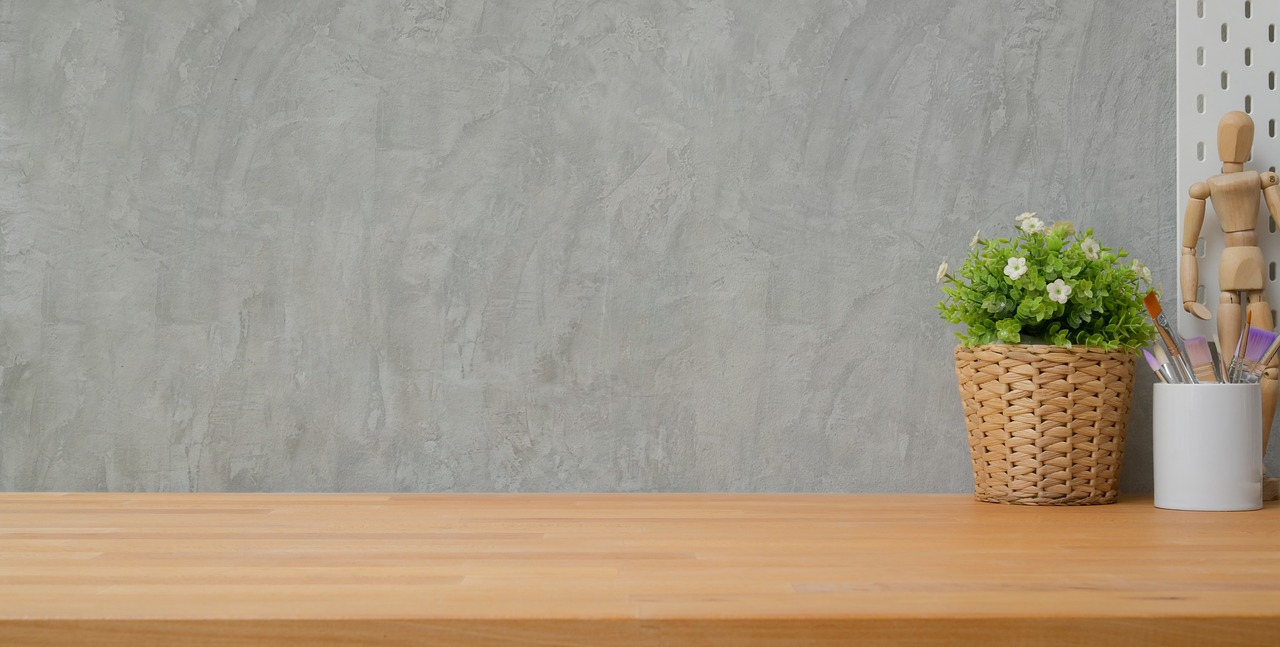
Organizing Your Quilting Space
Creating a cozy and efficient quilting space is essential for any quilter, especially during the summer months when you want to make the most of your time. A well-organized area not only enhances your productivity but also makes the entire quilting experience more enjoyable. Imagine sitting down to quilt in a space that feels inviting and clutter-free; it’s like stepping into a creative oasis! So, how can you transform your quilting area into the ultimate crafting haven?
First, consider the layout of your workspace. Make sure that your sewing machine, cutting mat, and fabric storage are all within easy reach. This reduces unnecessary movements and keeps your focus on your project. You might want to arrange your tools and materials in a way that flows naturally, allowing you to move seamlessly from one task to another. For instance, having your cutting tools near your cutting mat and your fabric storage close to your sewing machine can save you time and frustration.
Next, let's talk about storage solutions. Investing in storage bins, shelves, and baskets can help you keep your fabrics, threads, and tools organized. Here’s a little tip: categorize your supplies! You can sort your fabrics by color, type, or project. This not only makes it easier to find what you need but also adds a pop of color and visual appeal to your space. For example, you could have a dedicated shelf for summer-themed fabrics, making it easy to grab what you need for your seasonal projects.
When it comes to tools, consider using clear containers or label everything. This way, you won’t have to dig through a mountain of supplies to find that elusive seam ripper or your favorite rotary cutter. A tidy workspace can lead to a tidy mind, and you’ll find yourself more inspired and ready to tackle those summer quilting projects!
Additionally, don’t forget about lighting. Good lighting is crucial, especially when working with intricate designs or small pieces. Natural light is ideal, but if that’s not an option, invest in bright, adjustable lamps. They can make a world of difference in your comfort level while quilting. You might even find that the right lighting can enhance your fabric colors, making your summer quilts even more vibrant!
Finally, consider adding personal touches to your quilting space. Whether it’s a bulletin board filled with inspiration, a comfy chair for breaks, or a small plant to liven things up, these elements can make your space feel uniquely yours. Remember, your quilting area should be a reflection of your personality and creativity, serving as a sanctuary where you can escape and let your imagination soar.
Q: How can I keep my quilting space tidy?
A: Regularly declutter your workspace and put away tools and materials after each session. Use storage solutions like bins and baskets to keep everything organized.
Q: What are the best storage solutions for quilting supplies?
A: Clear containers, shelves, and labeled baskets are excellent for organizing fabrics, threads, and tools. Consider sorting by color or project for easier access.
Q: How can I improve lighting in my quilting space?
A: Utilize natural light when possible, and invest in bright, adjustable lamps for evening quilting sessions. Good lighting can enhance your comfort and the colors of your fabrics.
Q: Should I personalize my quilting space?
A: Absolutely! Adding personal touches like inspiration boards, comfy seating, or decorative items can make your space more inviting and inspire your creativity.
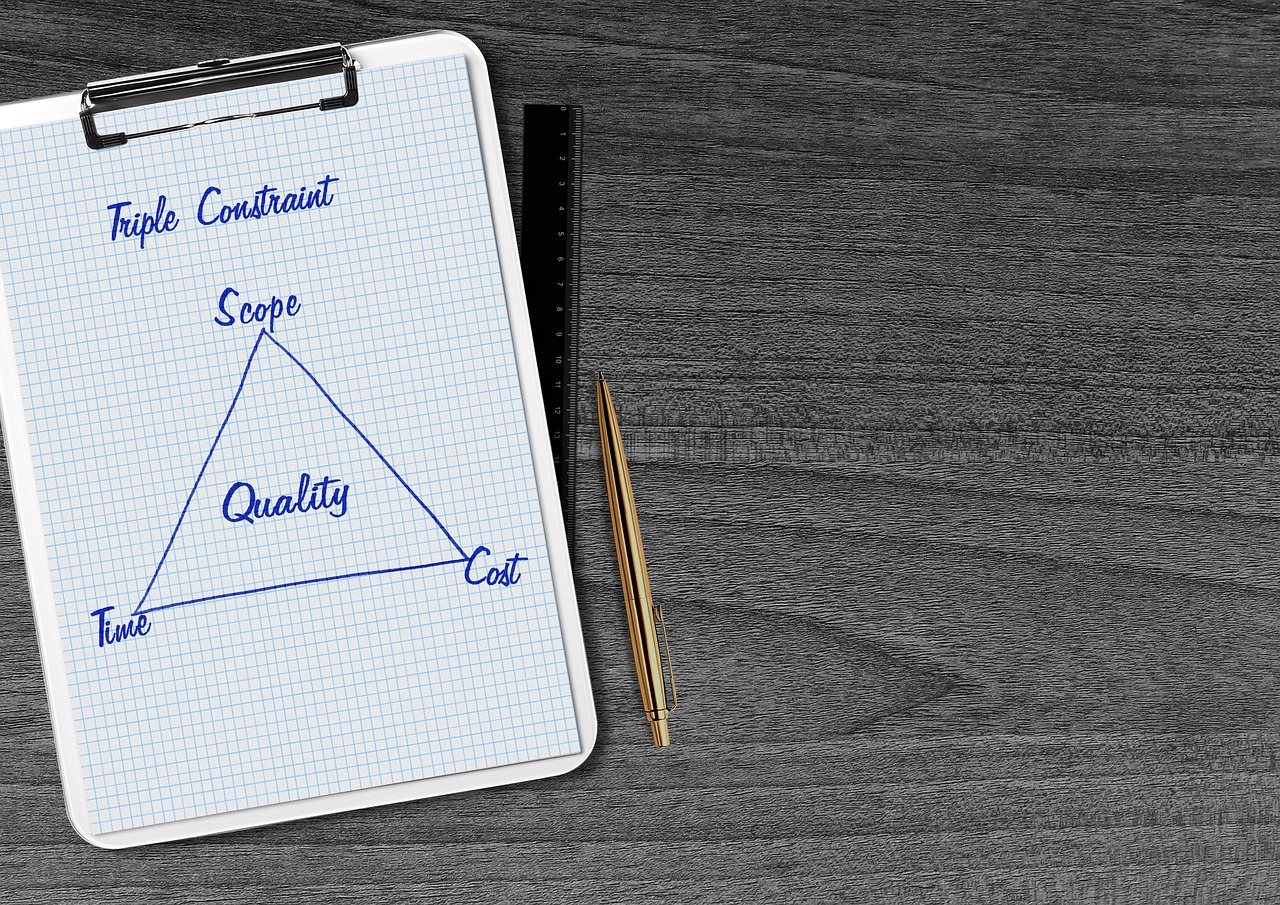
Finishing Touches for Summer Quilts
When it comes to quilting, the finishing touches can truly transform your project from a simple blanket into a cherished work of art. These final details not only enhance the overall look of your summer quilts but also add a personal flair that reflects your unique style. Let's explore some techniques that can elevate your quilting game!
One of the most important aspects of finishing your quilt is the binding. The binding is like the frame of a painting; it provides a polished edge that brings everything together. There are various binding techniques you can choose from, including:
- Single Fold Binding: A straightforward method that is easy to apply.
- Double Fold Binding: Offers a more durable finish and a clean look.
- Bias Binding: Perfect for curves and angles, adding a professional touch to your quilt.
Choosing the right binding not only enhances the quilt’s durability but also adds a pop of color or texture that can complement your fabric choices. Imagine a bright, contrasting binding that frames a soft pastel quilt—what a stunning visual impact!
Another delightful way to add character to your quilts is through embellishments. Think of them as the jewelry of your quilt—simple yet effective in making your creation stand out. You can consider:
- Buttons: Sew on some colorful buttons for a playful touch.
- Embroidery: Personalize your quilt with embroidered initials or motifs that resonate with summer themes.
- Appliqué: Add fun shapes like suns, flowers, or beach items to enhance the summer vibe.
These embellishments can be strategically placed on the quilt's borders or scattered throughout the design for a whimsical effect. The key is to ensure that they align with your overall theme, creating a cohesive and visually appealing piece.
As you finalize your summer quilts, don’t forget to consider the quilt label. A label serves as a signature of your craftsmanship and can be a heartfelt addition to your creation. You can include:
- Your name or initials
- The date of completion
- A special message or the quilt's name
Labels can be made from fabric or paper, and they not only add a personal touch but also serve as a lasting memory for whoever receives the quilt. It’s like leaving a little piece of your heart in every stitch!
Finally, take a moment to admire your work. The finishing touches are not just about aesthetics; they’re about celebrating the time, effort, and creativity you poured into your summer quilt. Whether you’re planning to keep it for yourself or gift it to someone special, these details will make all the difference. So, grab your favorite beverage, sit back, and enjoy the beauty of your completed project!
Q: What is the best fabric for summer quilts?
A: Lightweight cotton or linen fabrics are ideal for summer quilts due to their breathability and comfort.
Q: How can I make my quilt more durable?
A: Using quality materials, reinforcing seams, and choosing the right binding technique can enhance durability.
Q: Can I use scrap fabrics for my summer quilt?
A: Absolutely! Scrap fabrics can create unique patchwork designs that celebrate creativity and reduce waste.
Q: What embellishments are suitable for summer quilts?
A: Fun embellishments like buttons, embroidery, and appliqué can add charm and personalize your summer quilts.
Q: How do I care for my summer quilt?
A: Always check the care instructions for your fabrics. Generally, gentle washing and air drying are recommended to maintain the quilt's quality.

Binding Options for a Polished Look
When it comes to finishing your summer quilts, the binding is the cherry on top! It’s not just about functionality; it's about making your quilt look absolutely stunning. The right binding can elevate your quilt, giving it that professional touch that makes all the difference. But with so many options available, how do you choose the best one for your project?
First off, let’s talk about the popular types of binding you can use. The most common choices include:
- Single-Fold Binding: This is the simplest form of binding, where you fold the fabric in half and sew it to the edge of the quilt. It’s quick and easy, making it perfect for beginners.
- Double-Fold Binding: This method involves folding the fabric twice, creating a more durable edge. It’s great for quilts that will see a lot of use, like those cozy lap quilts for summer picnics.
- Bias Binding: Cut on the bias, this binding stretches easily around curves and corners, making it ideal for quilts with rounded edges or intricate designs.
Choosing the right binding fabric is also crucial. You might want to consider using a fabric that contrasts with your quilt top to create a striking visual effect, or you could opt for a fabric that matches to give a seamless look. The choice is yours, and it can dramatically change the overall appearance of your quilt.
Another key aspect to consider is the width of your binding. A wider binding can provide a more substantial finish, while a narrower binding offers a delicate touch. Generally, a width of 2.5 inches is a popular choice, but feel free to experiment based on your quilt's style and your personal preference.
Finally, don't forget about the finishing techniques! You can hand-stitch the binding for a more traditional look, or machine stitch it for a quick and sturdy finish. Each method has its own charm, and you might find that your choice reflects your personal quilting style.
In summary, the binding is not just a practical necessity; it’s an opportunity to express your creativity and add that final polish to your quilt. So, whether you choose a bold color, a subtle pattern, or a unique technique, remember that your binding can transform your quilt from ordinary to extraordinary!
Q: What is the best fabric for binding my quilt?
A: Cotton fabric is the most commonly used for binding due to its durability and ease of handling. However, you can also use other materials like linen or polyester blends depending on your desired look and feel.
Q: How do I calculate the amount of fabric needed for binding?
A: To calculate the fabric needed for binding, measure the perimeter of your quilt (add the lengths of all four sides) and divide by the width of your binding strip. For example, if your quilt measures 60 inches by 80 inches, the perimeter is 2(60 + 80) 280 inches. If you’re using 2.5-inch wide binding strips, you would need approximately 112 inches of fabric to make the binding.
Q: Can I use leftover fabric for binding?
A: Absolutely! Using leftover fabric is a great way to reduce waste and add a personal touch to your quilt. Just ensure that the fabric is of similar weight and texture to your quilt top for the best results.

Adding Embellishments
When it comes to quilting, the finishing touches can truly make your project shine. Adding embellishments is like sprinkling a little fairy dust on your quilt, turning a simple creation into a stunning masterpiece. Think about how a beautiful frame enhances a painting; similarly, embellishments can elevate your quilt from ordinary to extraordinary. From buttons to embroidery, there are countless ways to personalize your quilts and make them uniquely yours.
One popular method is to incorporate buttons. These little gems come in an array of colors, shapes, and sizes, allowing you to express your creativity. Imagine adding a cluster of colorful buttons to the corners of a quilt or using them as part of a larger design. Not only do they add visual interest, but they also provide a tactile element that invites touch. You can even use vintage buttons for a nostalgic feel, connecting your quilt to a story or memory.
Another fantastic way to embellish your quilt is through embroidery. This technique allows you to add intricate designs and personalized messages directly onto your fabric. Whether you choose to stitch a simple monogram or a complex floral pattern, embroidery can transform a basic quilt into a cherished keepsake. Moreover, it gives you the freedom to incorporate themes or motifs that resonate with you or the recipient of the quilt.
For those looking to explore further, consider using fabric paint or appliqué. Fabric paint can add vibrant colors and unique designs, while appliqué allows you to sew additional fabric shapes onto your quilt, creating depth and texture. Both methods are excellent for showcasing your artistic flair and can be tailored to match the summer vibes you want to capture.
Don't forget about ribbons and lace. These delicate additions can provide a soft, romantic touch to your quilts. You might weave a ribbon through the quilt's seams or sew lace along the edges for a vintage look. The contrast of textures can add an unexpected charm that makes your quilt stand out. Remember, the key is to balance embellishments with the quilt's overall design, ensuring that your additions enhance rather than overwhelm.
In summary, adding embellishments is a delightful way to personalize your summer quilts. It allows you to express your creativity and make your projects truly unique. So, gather your supplies and let your imagination run wild! Whether you choose buttons, embroidery, fabric paint, or any other embellishment, the results will surely bring a smile to your face and warmth to your heart.
- What types of embellishments work best for summer quilts? Lightweight materials like buttons, ribbons, and embroidery threads are ideal for summer quilts, as they won’t add unnecessary weight or warmth.
- Can I wash my quilt after adding embellishments? Yes, but be sure to follow care instructions specific to the embellishments used. Hand washing may be advisable for quilts with delicate details.
- Are there any embellishments I should avoid? Avoid heavy embellishments that may weigh down the quilt or make it uncomfortable to use during the warmer months.
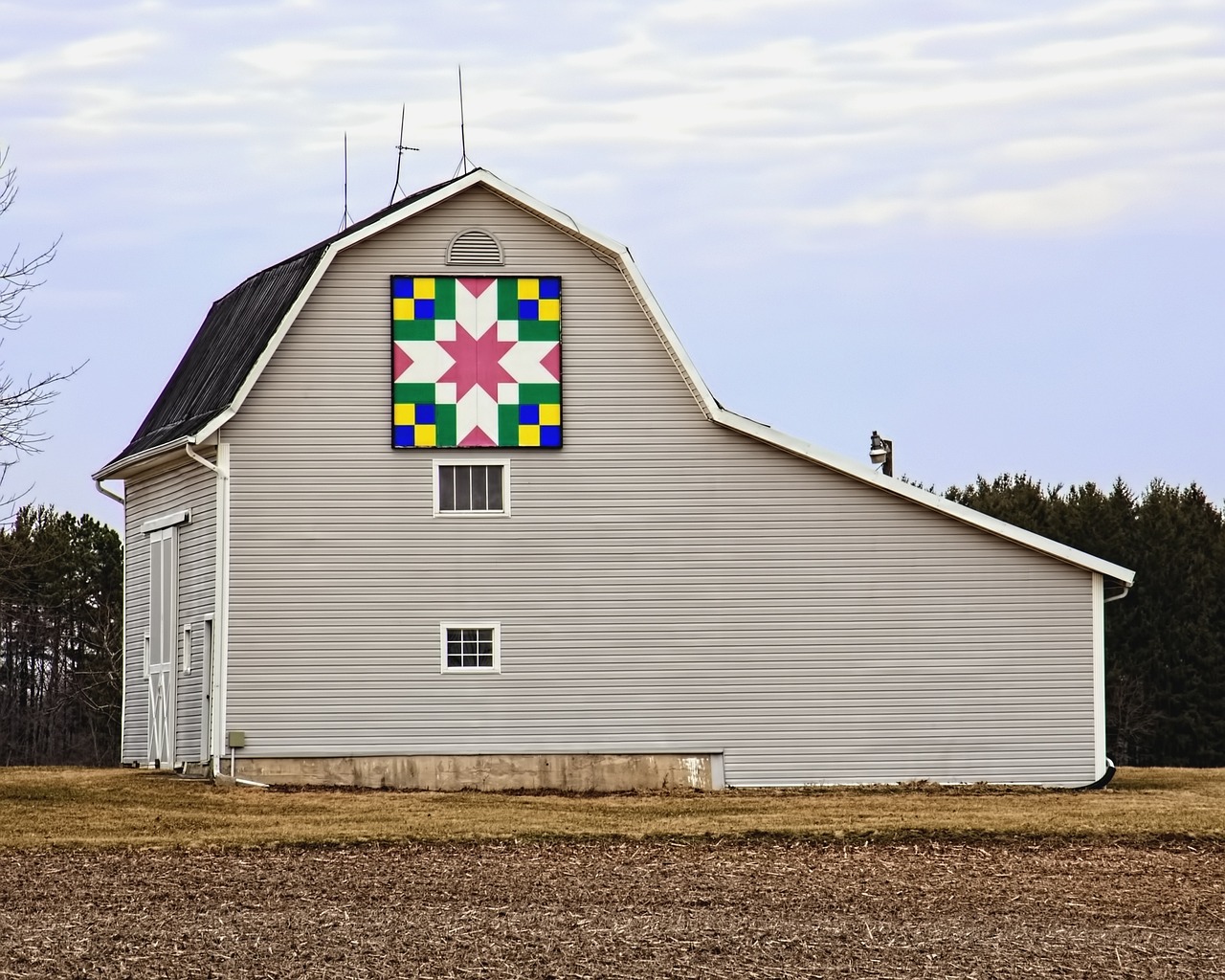
Sharing Your Quilted Creations
Quilting is not just a solitary craft; it’s a vibrant community waiting to be explored! Once you've poured your heart and soul into creating a beautiful quilt, the next thrilling step is to share your creations with others. Whether you want to showcase your work to inspire fellow crafters or gift a quilt to a loved one, the joy of sharing can enhance your quilting experience immensely. Have you ever thought about how a simple quilt can spark conversations, evoke memories, and even forge new friendships? Let’s dive into some fantastic ways to share your quilts and spread the love of quilting!
One exciting way to share your quilts is by hosting a small quilt show. Imagine transforming your living room or backyard into a cozy gallery filled with your colorful creations! Invite friends, family, and fellow quilting enthusiasts to admire your work. You could even encourage them to bring their quilts to create a community showcase. This not only fosters a sense of belonging but also inspires others to take up quilting. Plus, it’s a great excuse to enjoy some snacks and good company!
Another heartwarming option is gifting your quilts for special occasions. Handmade quilts are not just blankets; they are heartfelt treasures that can be cherished for years. Think about birthdays, anniversaries, or even holidays. A quilt can be a beautiful way to express your love and appreciation, wrapping your loved ones in warmth and comfort. You might even consider personalizing the quilt with colors or patterns that hold special meaning for the recipient. The joy of gifting a quilt is like giving a piece of yourself, and the smiles you receive in return are priceless!
Additionally, sharing your creations online can open up a world of connection. Platforms like Instagram, Pinterest, and quilting forums are perfect for showcasing your work. You can share photos, tutorials, and even the stories behind each quilt. Engaging with other quilters online can lead to new friendships and collaborations, as well as provide valuable feedback on your projects. Don’t forget to use relevant hashtags to reach a wider audience; you never know who might be inspired by your work!
Lastly, consider joining or forming a quilting group. These gatherings can be a fantastic way to share tips, techniques, and, of course, your finished quilts. Regular meet-ups can motivate you to finish projects and keep your creative juices flowing. Plus, sharing your quilting journey with others can lead to lifelong friendships and a supportive community that celebrates each other's successes.
In summary, sharing your quilted creations can take many forms, from hosting a quilt show to gifting your work or engaging with the online quilting community. Each method not only showcases your talent but also enriches the quilting experience for both you and those around you. So, what are you waiting for? Grab your quilts, gather your friends, and let the world see the beauty of your craftsmanship!
- How can I organize a quilt show?
Start by selecting a venue, whether it’s your home or a community center. Set a date, invite guests, and consider having refreshments to create a welcoming atmosphere. - What are some good occasions for gifting quilts?
Quilts make excellent gifts for birthdays, weddings, anniversaries, and even housewarmings. They are perfect for any occasion where you want to show someone you care. - How do I share my quilts online safely?
When sharing online, be mindful of your privacy. Use watermarks on your photos and consider sharing in closed groups if you’re concerned about your designs being copied.
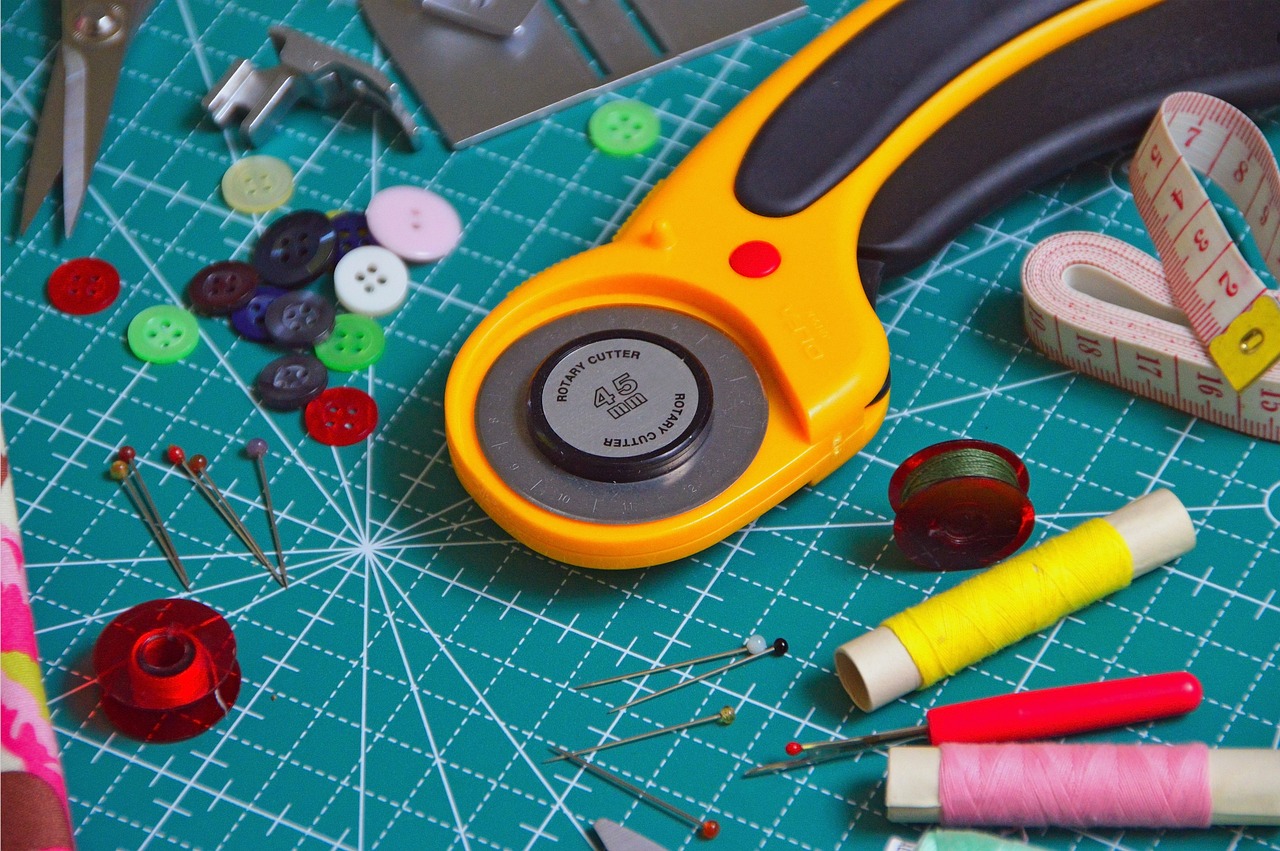
Hosting a Quilt Show
Hosting a quilt show can be an exhilarating experience, not just for you but for the entire quilting community around you. Imagine transforming your living room or a local community center into a vibrant gallery showcasing the creativity and craftsmanship of quilts. It’s a chance to share your passion, inspire others, and foster connections among fellow quilters. So, how do you go about organizing such a delightful event?
First, consider the venue. Depending on the scale of your show, you might choose to host it at home, inviting friends and family, or you could collaborate with local quilt shops or community centers for a larger audience. Make sure the space is accessible and has enough room to display the quilts comfortably. You’ll want to create an inviting atmosphere, perhaps with refreshments and seating areas for guests to relax and chat about the quilts.
Next, think about the quilt selection. You could feature your own creations alongside those of friends or local quilters. A diverse range of styles, techniques, and themes will captivate your audience. To add an interactive element, consider including a section where attendees can vote for their favorite quilt. This not only engages your guests but also fosters a sense of community as everyone shares their thoughts and preferences.
Promoting your quilt show is essential for attracting visitors. Utilize social media platforms, local bulletin boards, and community newsletters to spread the word. You might even create a simple flyer to hand out at local fabric shops or quilting groups. The more people who know about your event, the more vibrant your quilt show will be!
Lastly, don’t forget to plan for post-event sharing. After the show, consider documenting the event through photos or videos, which can be shared on social media or in a newsletter. This not only allows those who couldn’t attend to experience the beauty of the quilts but also builds excitement for future events. Hosting a quilt show is not just about displaying quilts; it's about celebrating creativity, community, and the joy of quilting!
- How do I choose a venue for my quilt show?
Consider the size of your collection and the number of expected guests. A home setting can be intimate, while a community center allows for larger gatherings. - What should I include in my quilt show?
Feature a variety of quilts, including different styles and techniques. You might also include a voting section for guests to pick their favorites. - How can I promote my quilt show?
Use social media, local community boards, and flyers to reach out to potential attendees. Engaging with local quilting groups can also help spread the word. - What if I want to host my quilt show annually?
Building on the success of your first show, consider gathering feedback from attendees and participants to improve future events.
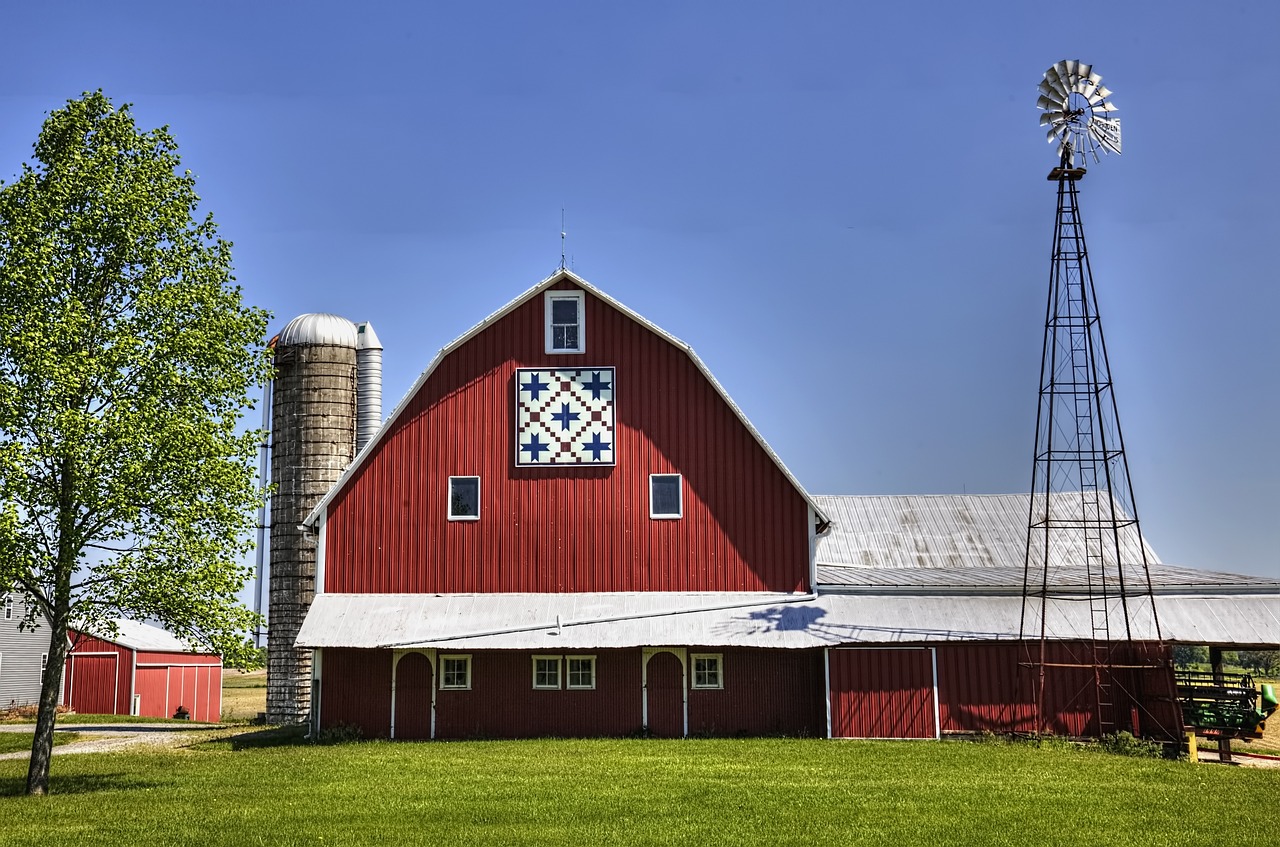
Gifting Quilts for Special Occasions
When it comes to gifting quilts, the thoughtfulness behind this handmade treasure can truly warm the heart. A quilt is not just a cozy blanket; it is a labor of love, a tangible representation of care and affection. Imagine the joy on a loved one’s face as they unwrap a beautifully crafted quilt, knowing that each stitch was made with them in mind. Whether it’s for a birthday, anniversary, or a special milestone, gifting a quilt can turn any occasion into a memorable one.
One of the most beautiful aspects of giving quilts is their versatility. You can tailor the design to reflect the recipient’s personality or the theme of the occasion. For instance, a quilt adorned with vibrant colors and playful patterns can be perfect for a child’s birthday, while a more subdued, elegant design may suit a wedding or anniversary gift. Here are some ideas to help you choose the right quilt for different occasions:
- Birthdays: Consider fun, bright colors and playful patterns that reflect the recipient's interests.
- Weddings: A classic, elegant quilt in soft hues can be a cherished gift for newlyweds.
- Anniversaries: Personalize a quilt with meaningful fabrics or colors that represent the couple's journey together.
- Baby Showers: Soft pastels or whimsical designs can create a delightful quilt for a new arrival.
To add an extra touch of personalization, consider incorporating elements that hold significance to the recipient. You could use fabrics that represent their favorite colors, hobbies, or even family heirlooms. This not only makes the quilt unique but also adds a layer of sentimentality that can be cherished for years. Additionally, writing a heartfelt note about the quilt's inspiration or the process behind its creation can further enhance its value.
Moreover, quilts can serve as a legacy. They are not just gifts; they can be passed down through generations, telling stories and creating connections. Imagine a quilt that has been lovingly crafted and then handed down from grandparent to parent, and eventually to child. This tradition can create a rich tapestry of family history, making the quilt a treasured heirloom.
In conclusion, gifting quilts for special occasions is a beautiful way to express love and thoughtfulness. They are more than just functional items; they are pieces of art that carry emotional weight. So, next time you’re considering a gift, think about the warmth and joy that a handmade quilt can bring. It’s a gift that not only wraps the recipient in comfort but also envelops them in love and cherished memories.
Q: How long does it take to make a quilt?
A: The time it takes to make a quilt can vary greatly depending on the complexity of the design and the quilter's skill level. A simple quilt might take a few days, while more intricate designs can take weeks or even months to complete.
Q: What materials do I need to start quilting?
A: Basic quilting supplies include fabric, batting, a rotary cutter, a cutting mat, quilting rulers, and sewing thread. You may also want to invest in a sewing machine designed for quilting to make the process easier.
Q: Can I wash my quilt?
A: Yes, most quilts can be washed, but it's essential to check the care instructions for the specific fabrics used. Generally, it's best to wash quilts in cold water on a gentle cycle and tumble dry on low heat.
Q: How can I personalize a quilt for gifting?
A: You can personalize a quilt by choosing fabrics that reflect the recipient’s favorite colors or patterns, incorporating special messages or names through embroidery, or using fabrics that hold sentimental value.
Frequently Asked Questions
- What are some beginner-friendly quilting projects for summer?
If you're just starting out, consider simple patterns like lap quilts or patchwork designs. These projects require minimal skills and can be completed quickly, making them perfect for summer creativity!
- What fabrics are best for summer quilting?
Lightweight fabrics like cotton and linen are ideal for summer quilts. Cotton is soft and breathable, while linen offers a unique texture and rustic charm. Both materials help keep you cool during those warm months!
- How can I combine different fabrics for my summer quilts?
Mixing and matching fabrics can create vibrant and eye-catching quilts. Try using floral patterns with solid colors or pairing different textures to enhance the overall appeal of your projects!
- What quick quilt patterns can I make in a weekend?
Look for patterns specifically designed for speed, such as simple lap quilts or scrap fabric patchworks. These projects are not only fun but also allow you to enjoy the outdoors while being creative!
- How can I stay cool while quilting in the summer?
To maintain a comfortable temperature, consider working in a well-ventilated area, using fans, or even scheduling your quilting sessions during cooler parts of the day. Staying hydrated is also key!
- What are some finishing touches I can add to my summer quilts?
Adding binding or embellishments like buttons or embroidery can elevate your quilts. These final touches not only enhance the appearance but also give your projects a personal flair!
- How can I share my quilts with others?
Consider hosting a small quilt show or gifting your quilts for special occasions like birthdays or anniversaries. Sharing your handmade creations can bring joy to both you and your loved ones!



















